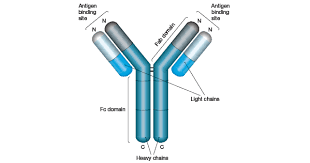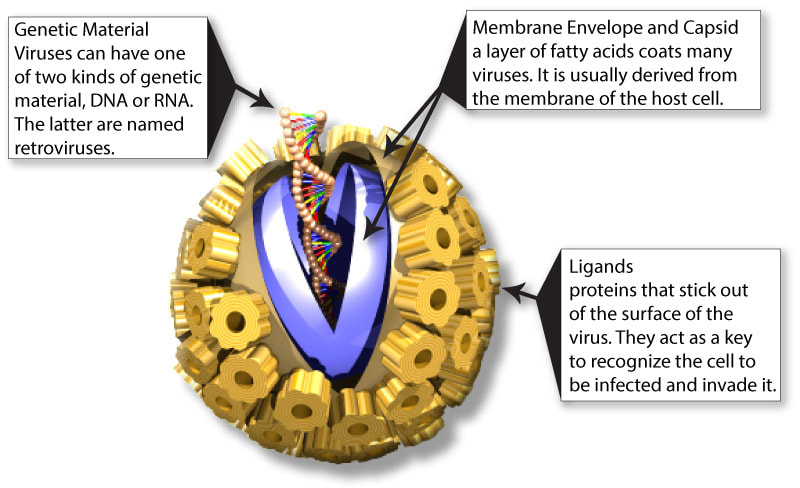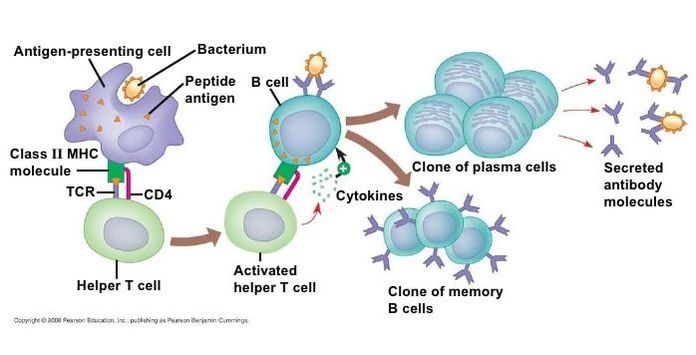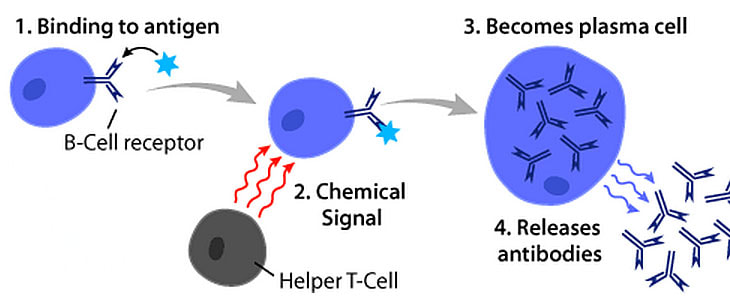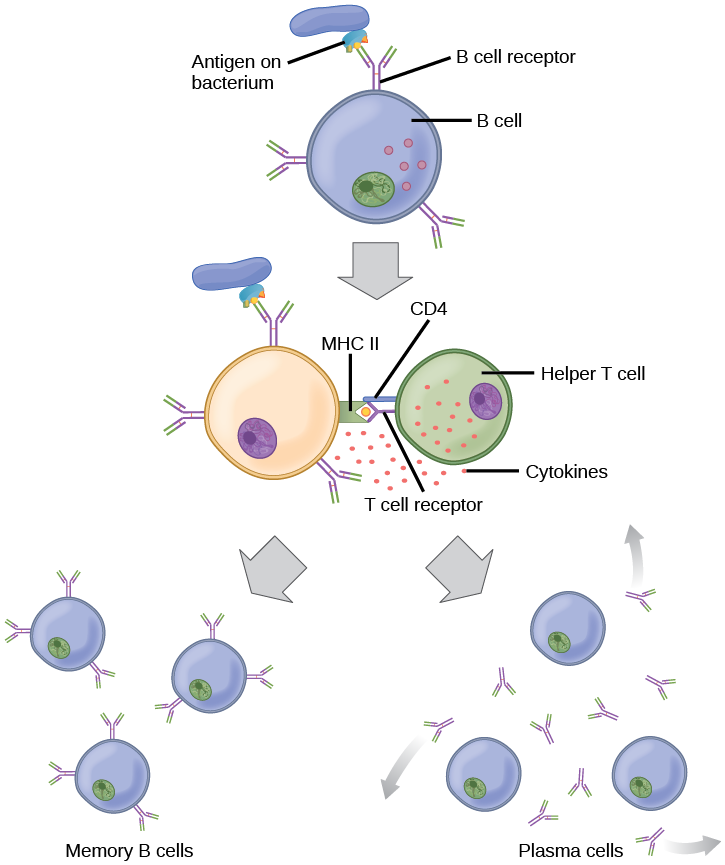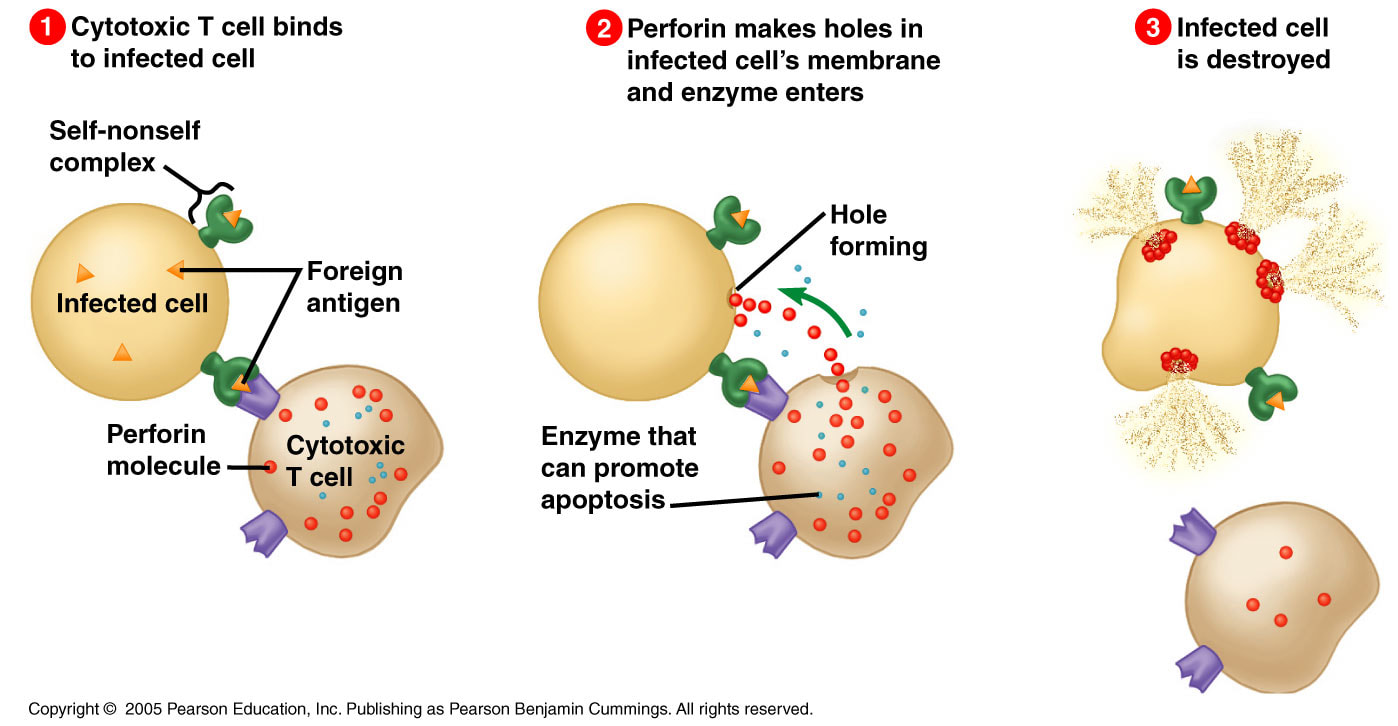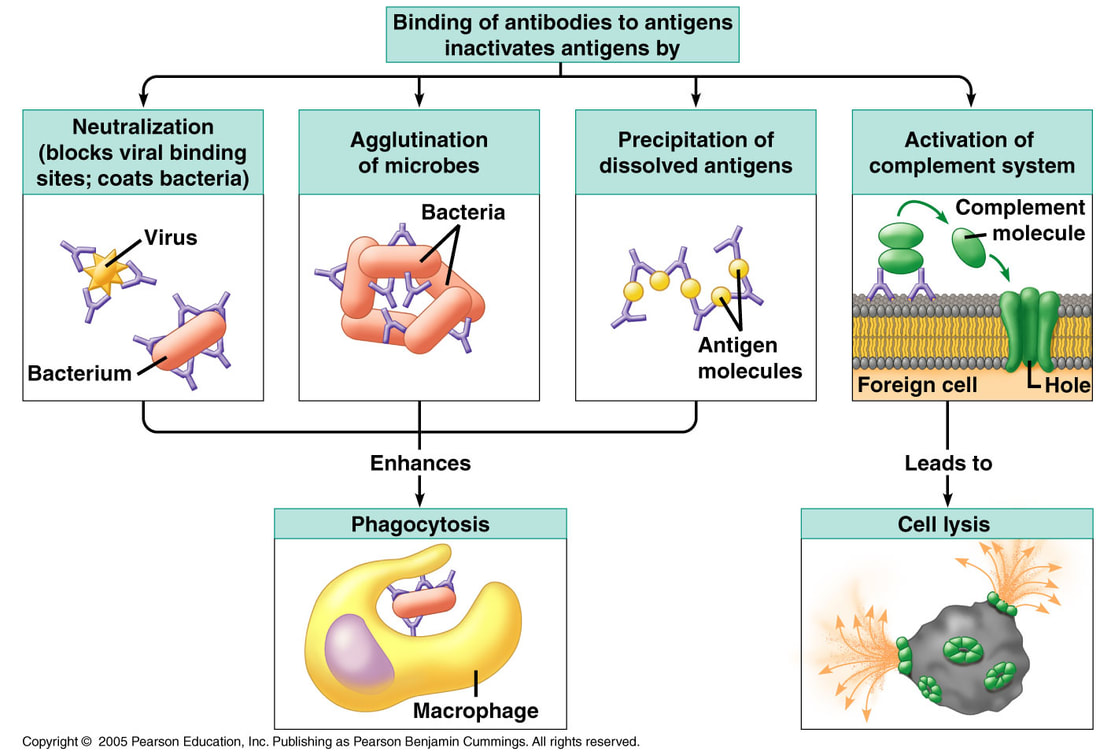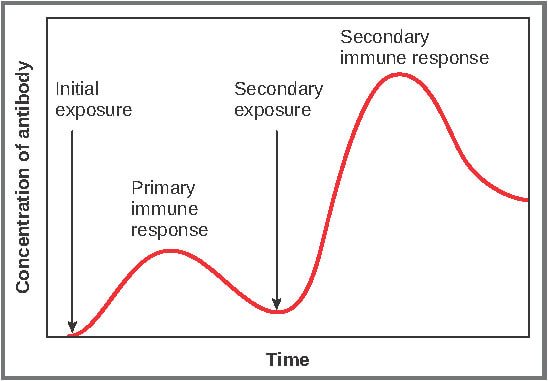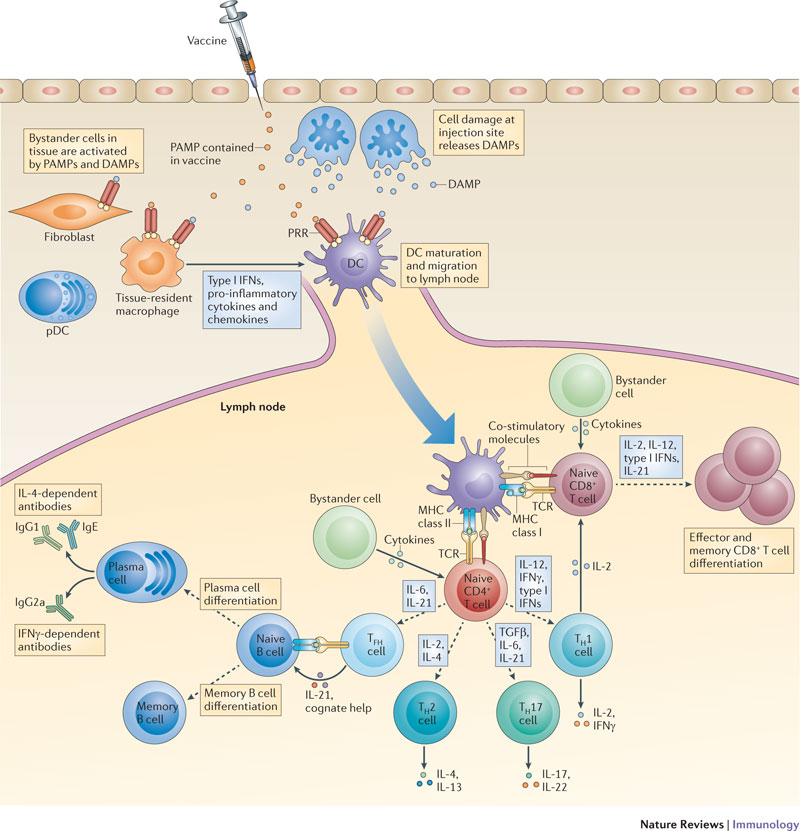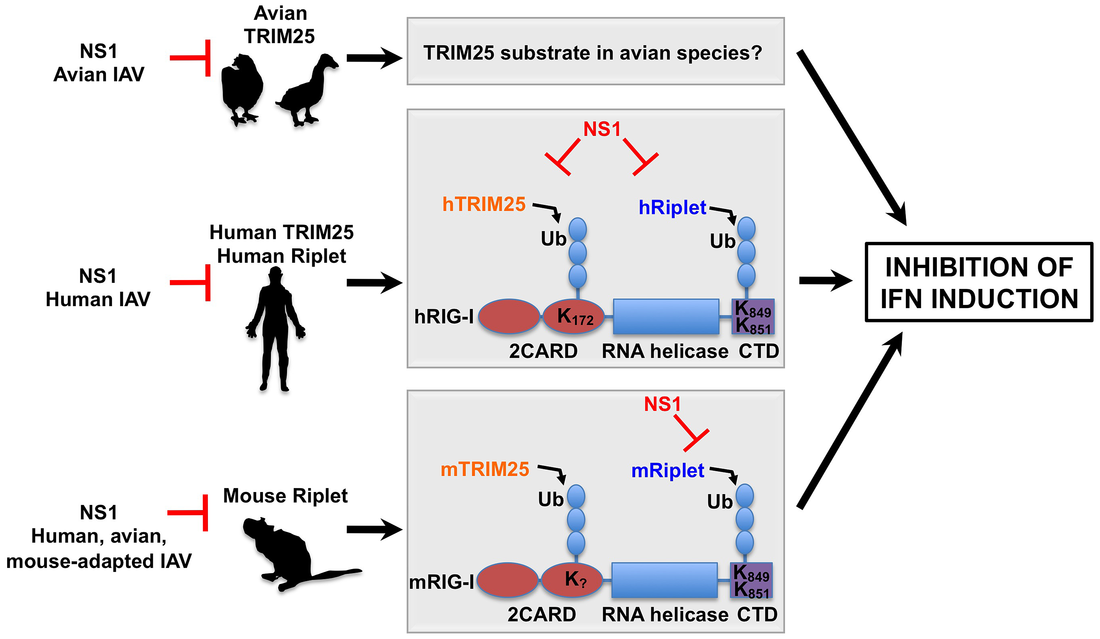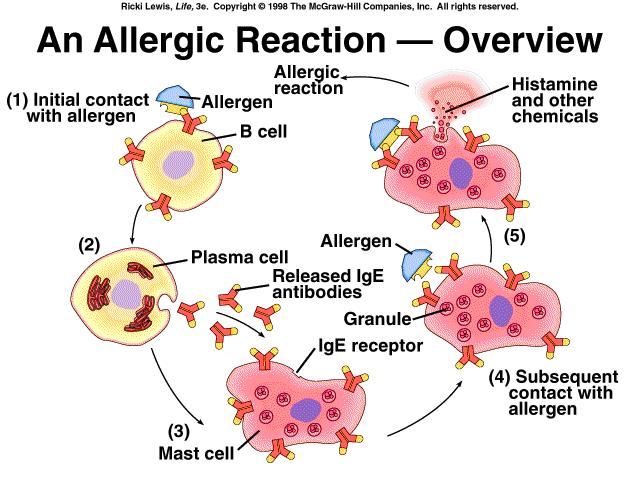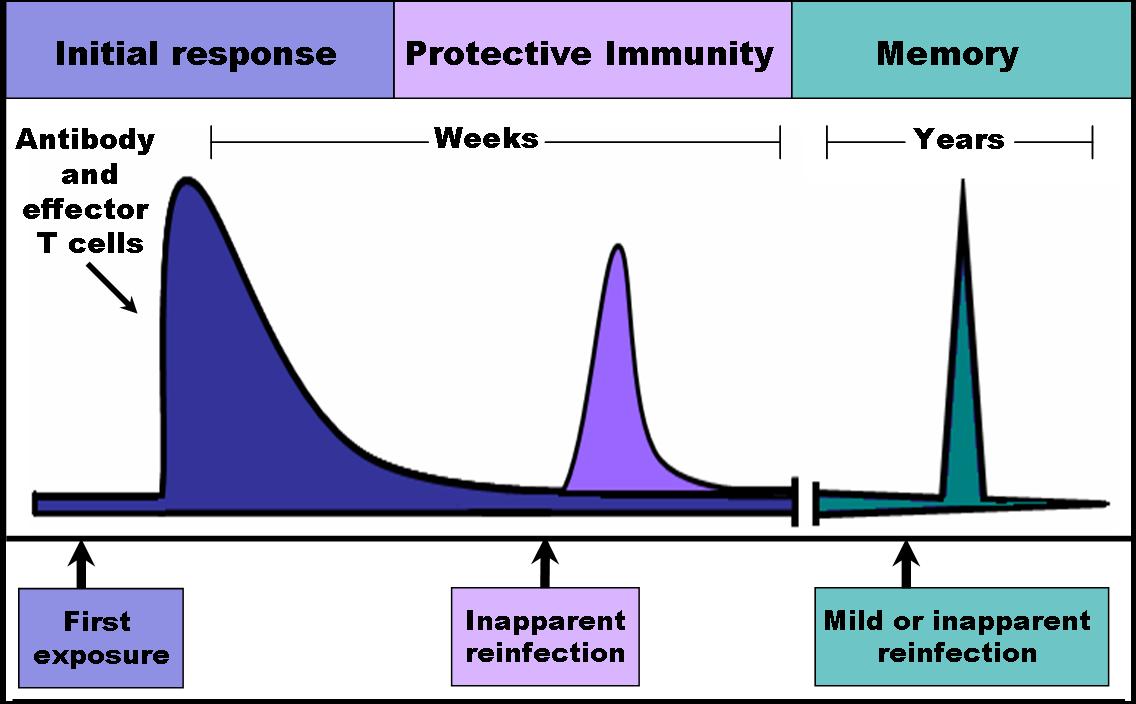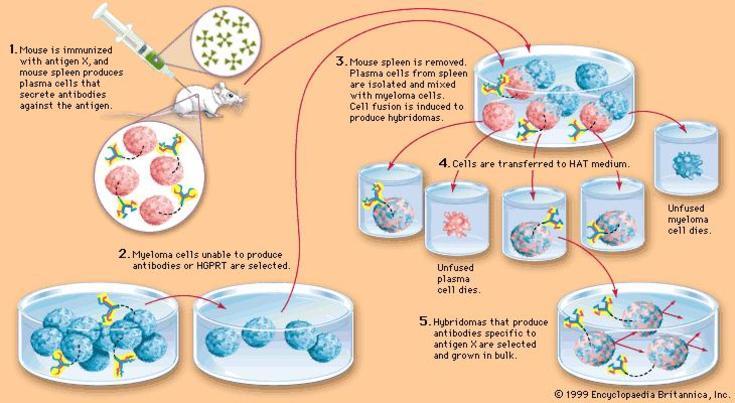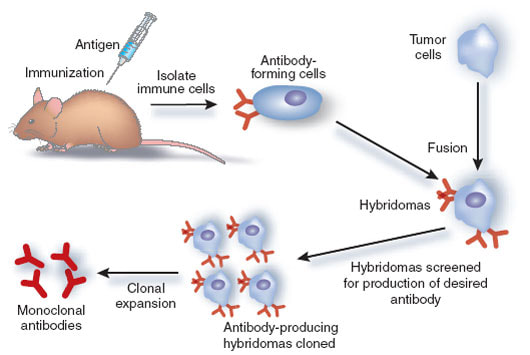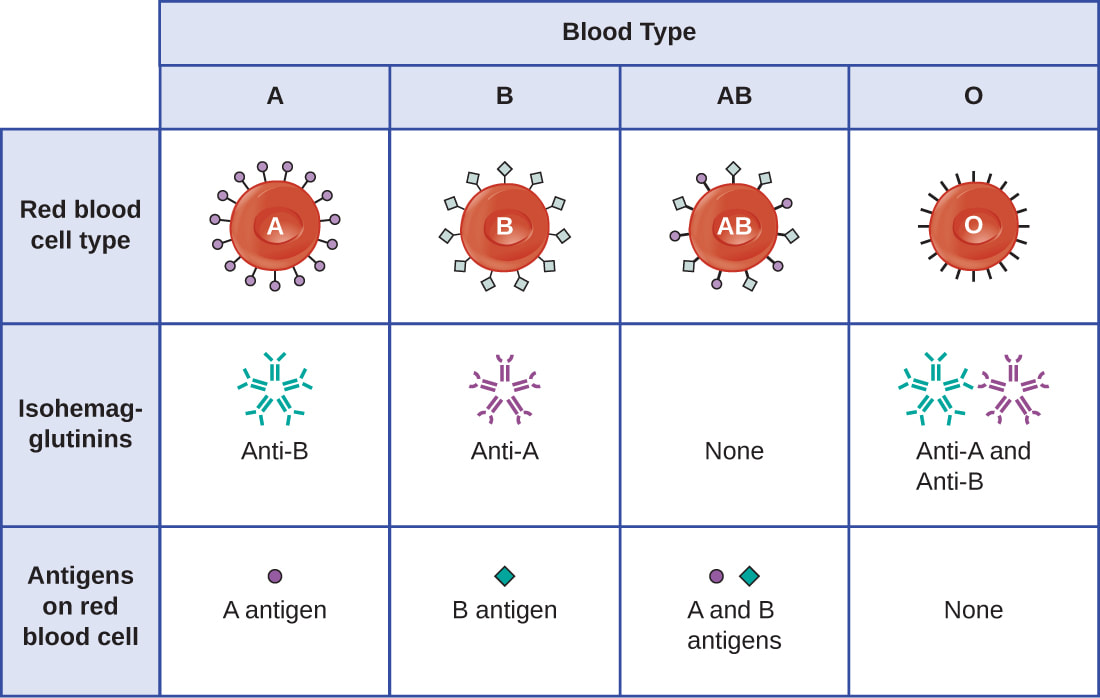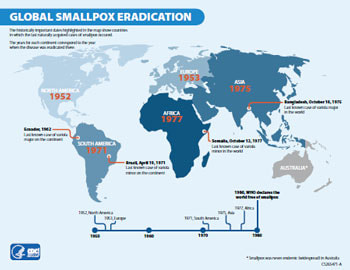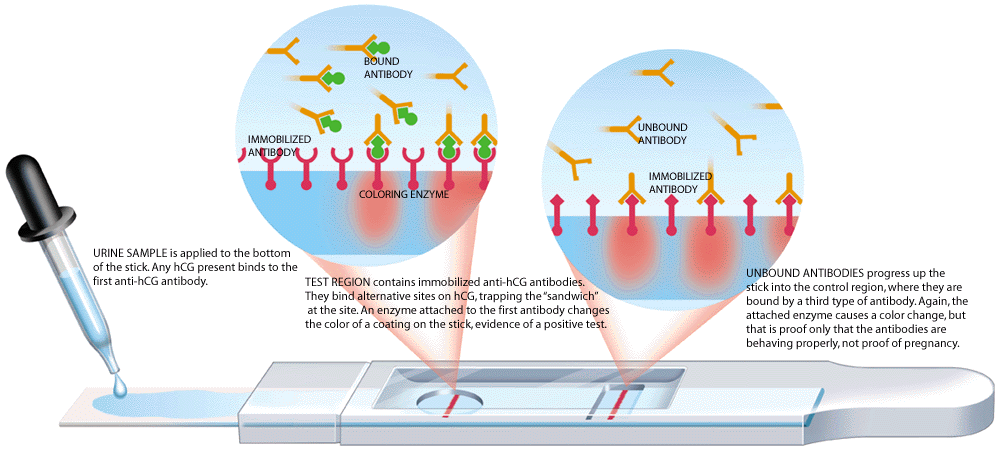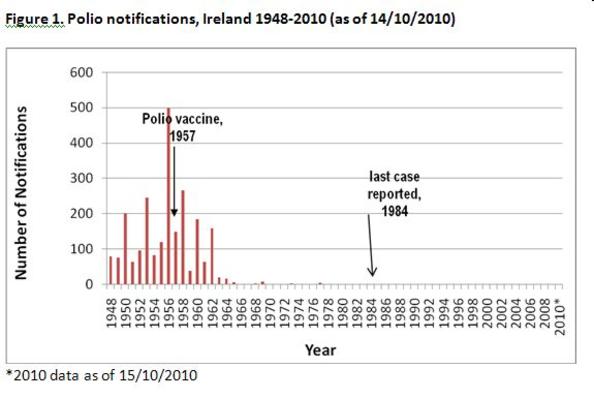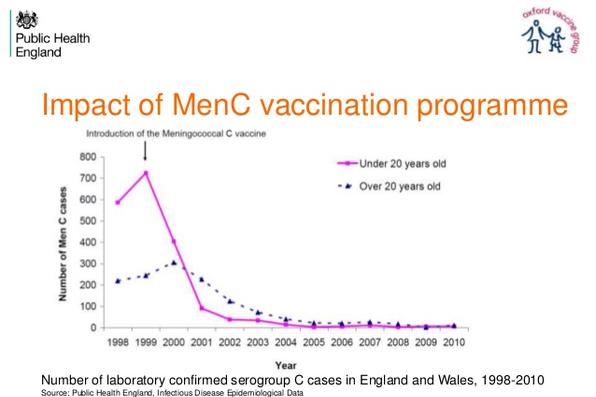- IB Style Question Banks with Solution
- IB DP Biology SL- IB Style Practice Questions with Answer-Topic Wise-Paper 1
- IB DP Biology HL- IB Style Practice Questions with Answer-Topic Wise-Paper 1
- IB DP Biology SL- IB Style Practice Questions with Answer-Topic Wise-Paper 2
- IB DP Biology HL- IB Style Practice Questions with Answer-Topic Wise-Paper 2
11.1 Antibody Production and Vaccination
Essential Idea:
Immunity is based on recognition of self and destruction of foreign materials
Understandings:
- Every organism has unique molecules on the surface of its cells
- Pathogens can be species-specific although others can cross species barriers
- B lymphocytes are activated by T lymphocytes in mammals
- Activated B cells multiply to form clones of plasma cells and memory cells
- Plasma cells secrete antibodies
- Antibodies aid the destruction of pathogens
- White blood cells release histamine in response to allergens
- Histamine causes allergic symptoms
- Immunity depends on the persistance of memory cells
- Vaccines contain antigens that trigger immunity but do not cause the disease
- Fusion of a tumor cell with an antibody-producing cell creates a hybridoma cell
- Monoclonal antibodies are produced by hybridoma cells
Applications:
- Smallpox was the first infectious disease of humans to have been eradicated by vaccination
- Monoclonal antibodies to hCG are used in pregnancy test kits
- Antigens on the surface of red blood cells stimulate antibody production in a person with a different blood group
Skills:
- Analysis of epidemiological data related to vaccination programmes
- Define antigen.
- List example antigen molecules.
- Explain the “challenge and response” mechanism of specific immunity.
- Describe activation of helper T lymphocytes by the macrophage.
- Describe activation of B cell lymphocytes by the helper T cells.
- Outline the structure and function of plasma B cells.
- Describe clonal selection of plasma B cells.
- Outline four modes of antibody action.
- Define immunity.
- State two mechanisms of immunity.
- Explain the differences between the primary and secondary immune responses.
- Explain the principle of vaccination.
- Outline mechanisms that prevent some pathogens from crossing species.
- Define zoonosis.
- List three examples of zoonotic diseases.
- State the source and function of histamine proteins.
- List allergic symptoms caused by histamines.
- State the function of an anti-histamine.
- Explain the production of hybridoma cells.
- Define “monoclonal antibody.”
- Describe the production of monoclonal antibodies in hybridoma cells.
- Outline the use of monoclonal antibodies in diagnosis and treatment.
- Outline the difference between the ABO blood antigens.
- State the fours human ABO blood types.
- Describe the consequence of mismatched blood transfusions, including agglutination and hemolysis.
- Describe the global initiative used to eradicate smallpox.
- Describe a pregnancy test strip works, including the role of free and immobilized monoclonal antibodies.
- Define epidemiology.
- Outline the role of an epidemiologist in vaccination programs.
- Describe how Jenner tested his smallpox vaccine.
- List reasons when Jenner’s test would not be approved today.
Topic 11.1 Antibody Production and Vaccination
In the Antibody Production and Vaccination unit will will learn how immunity is based on the fact that an animal’s body can recognize cells and proteins that are of “it-self” and distinguish those that are foreign or ‘nonself’. We will learn how foreign material can be identified and destroyed.
This unit will last 4 school days
Essential idea:
- Immunity is based on recognition of self and destruction of foreign material.
Nature of science:
- Consider ethical implications of research—Jenner tested his vaccine for smallpox on a child. (4.5)
- Describe how Jenner tested his smallpox vaccine.
- List reasons when Jenner’s test would not be approved today.
Edward Jenner was a scientist who infected a small child with cowpox. After the boy recovered he then affected the child with the more virulent and possibly fatal smallpox, as he believed the child would be immune because of the original cowpox infection. He did this on a young child well below the age of consen
11.1 U 1 Every organism has unique molecules on the surface of its cells.
- Define antigen.
- List example antigen molecules.
An antigen is a molecule capable of inducing an immune response to produce an antibody in the host organism Sometimes antigens are part of the host itself in an autoimmune disease.
Antigens are “targeted” by antibodies. Each antibody (immune response) is specifically produced by the immune system to match an antigen after cells in the immune system come into contact with it; this allows a precise identification or matching of the antigen and the initiation of a tailored response.
All organisms have unique molecules or markers on the outer surface of the plasma membrane of their cells. These highly variable molecules are generally glycoproteins and they identify a cell as being “self” or “non-self”. These markers are called major histocompatibility complexes (MHC). These MHC proteins are genetically determined and are unique to that individual
11.1 U 2 B lymphocytes are activated by T lymphocytes in mammals.
- Explain the “challenge and response” mechanism of specific immunity.
- Describe activation of helper T lymphocytes by the macrophage.
- Describe activation of B cell lymphocytes by the helper T cells.
When a pathogen enters the blood, the specific antigen on the surface of the membrane is identified. Specific phagocytes known as macrophages recognize a pathogen as a foreign entity because of the antigens on the surface.. The macrophage engulfs and partially destroys the pathogen. The macrophage takes the antigens from the destroyed pathogen and displays them on the surface of the cell bound to a membrane protein called a MHC protein (called antigen presentation).
Specific T-lymphocytes receptors recognize and bind to the antigen presented by the macrophage, thus activating the T-lymphocyte. The activated T-cell binds to a B-lymphocyte specific to the antigen; activating the B-cell through the binding and the release of a signaling protein
11.1 U 3 Plasma cells secrete antibodies.
- Outline the structure and function of plasma B cells.
11.1 U 4 Activated B cells multiply to form clones of plasma cells and memory cells.
- Describe clonal selection of plasma B cells.
11.1 U 5 Antibodies aid the destruction of pathogens.
- Outline four modes of antibody action
- Agglutination – Antibodies cause the sticking together of pathogens by attaching to the antigens on the surface. These clumped masses of pathogens are then easily ingested and destroyed by phagocytes. The large agglutinated mass can be filtered by the lymphatic system and then phagocytised.
- Opsonisation – Antibodies make pathogens recognizable by binding to them and linking them to phagocytes.
- Neutralisation of toxins – Antibodies bind to toxins produced by pathogens in the blood plasma preventing them from affecting susceptible cells.
- Complement activation – The complement system is a collection of proteins which ultimately lead to the perforation of the membranes of pathogens. Antibodies bound to the surface of a pathogen activate a complement cascade which leads to the formation of a “membrane attack complex” that forms a pore in the membrane of the pathogen allowing water and ions to enter into the cell, causing the cell to lyse.
- Neutralisation of viruses and bacteria – Antibodies can bind to the surface of viruses, preventing them from entering host cells.
11.1 U 6 Immunity depends upon the persistence of memory cells.
- Define immunity.
- State two mechanisms of immunity.
- Explain the differences between the primary and secondary immune responses.
Immunity develops when the immune system is challenged by a specific antigen and produces antibodies and memory cells in response. Memory cells ensure that the second time an antigen is encountered, the body is ready to respond rapidly by producing more antibodies at a faster rate.
11.1. U 7 Vaccines contain antigens that trigger immunity but do not cause the disease.
- Explain the principle of vaccination.
Vaccines are introduced to the body usually through an injection but can be administered through orally or through a nasal spray. Vaccines contain a live attenuated (weakened) or killed version of the pathogen, its toxins or one of its surface antigens. Vaccines help to stimulate a primary immune response.
If the body encounters the actually pathogen, it will be destroyed right away by the antibodies during a secondary immune response. Vaccines has made great contributions towards public health through the prevention of many deadly or dangerous diseases such as tuberculosis, measles and smallpox
11.1 U 8 Pathogens can be species-specific although others can cross species barriers. (Oxford Biology Course Companion page 473).
- Outline mechanisms that prevent some pathogens from crossing species.
- Define zoonosis.
- List three examples of zoonotic diseases.
Diseases from other animals that can infect or be transmitted to humans is called Zoonosis. The passing of diseases from different species is a growing global health concern
11.1 U 9 White cells release histamine in response to allergens. (Oxford Biology Course Companion page 474)
- State the source and function of histamine proteins.
Histamine is an important protein involved in many allergic reactions. Allergies are caused by an immune response to a normally innocuous substance (i.e. pollen, dust) that comes in contact with lymphocytes specific for that substance, or antigen. In many cases, the lymphocyte triggered to respond is a mast cell. For this response to occur, a free-floating IgE (an immunoglobulin associated with allergic response) molecule specific to the antigen must first be attached to cell surface receptors on mast cells. Antigen binding to the mast cell-attached IgE then triggers the mast cell to respond. This response often includes the release of histamine. It causes contraction of smooth muscle and dilation of capillaries.
11.1 U 10 Histamines cause allergic symptoms.
- List allergic symptoms caused by histamines.
- State the function of an anti-histamine.
Histamine causes many of the symptoms of allergies, such as a runny nose or sneezing. When a person is allergic to a particular substance, such as a food or dust, the immune system mistakenly believes that this usually harmless substance is actually harmful to the body. In an attempt to protect the body, the immune system starts a chain reaction that prompts some of the body’s cells to release histamine and other chemicals into the bloodstream. The histamine then acts on a person’s eyes, nose, throat, lungs, skin, or gastrointestinal tract, causing allergy symptoms.
NOTE: this is why people with allergies take antihistamines!
11.1 U 11 Fusion of a tumour cell with an antibody-producing plasma cell creates a hybridoma cell.
- Explain the production of hybridoma cells.
Monoclonal antibodies are highly specific, purified antibodies that are produced by a clone of cells, derived from a single cell. They recognise only one antigen. To produce the clone of cells that will manufacture a monoclonal antibody, the antigen recognised by the antibody is injected into a mouse, or other mammal. In response to this challenge, the mouse’s immune system makes plasma B cells that are capable of producing the desired antibody. Plasma cells are removed from the spleen of the mouse. They will be of many different types with only some producing the desired antibody.
The B cells are fused with cancer cells called myeloma cells. The cells formed by fusion of plasma B cells and myeloma cells are called hybridoma cells.
11.1. U 12 Monoclonal antibodies are produced by hybridoma cells. (Oxford Biology Course Companion page 475).
- Define “monoclonal antibody.”
- Describe the production of monoclonal antibodies in hybridoma cells.
- Outline the use of monoclonal antibodies in diagnosis and treatment.
Monoclonal antibodies are identical antibodies produced by clones of a single parent immune cell that are specific to one type of antigen. A laboratory animal such as a mouse is injected with a specific antigen that corresponds with the needed antibodies. After the animal goes through a primary immune response, a plasma B-cell cell that produces the required antibody is removed from the spleen.
Myeloma (cancer) cells are cultured in a petri dish. These dividing myeloma cells are mixed together with the plasma B-cells and are treated to promote a fusion between the two cells, forming a cell called a hybridoma. The successful hybridomas have characteristics of both cells; produce antibodies and divide rapidly for a long time. These hybridoma cells are cultured and allowed to divide, producing many clone cells that are able to produce large amounts of antibodies. Monoclonal antibodies can be extracted and used for many different applications.
11.1 A 1 Antigens on the surface of red blood cells stimulate antibody production in a person with a different blood group (Oxford Biology Course Companion page 466).
- Outline the difference between the ABO blood antigens.
- State the fours human ABO blood types.
- Describe the consequence of mismatched blood transfusions, including agglutination and hemolysis.
Blood types are determined by the presence or absence of certain antigens – substances that can trigger an immune response if they are foreign to the body. Since some antigens can trigger a patient’s immune system to attack the transfused blood, safe blood transfusions depend on careful blood typing and cross-matching.
There are four major blood groups determined by the presence or absence of two antigens – A and B – on the surface of red blood cells:
- Blood groups such as A, B, AB and O are identified by cell surface antigens
- Rhesus (Rh) is another antigen that can be present on the surface of the blood cells, being either Rh positive (has antigen) or Rh negative (doesn’t have antigen)
- A blood transfusion given to an individual with the wrong blood type can stimulate an immune response called agglutination (clumping or clotting of the blood cells)
- This is followed by the destruction of the RBC (hemolysis)
- For example, someone with blood type A (antigen A on the surface) contains anti-B antibodies in their plasma. If they get a transfusion with blood type B, their immune system will attack and destroy the foreign blood cells with the B-antigen on the surface
- People with blood type O just have the basic antigen sequence that all blood cells have and are therefore not attacked by A or B antibodies; therefore, blood type O is known as the universal donor (O negative has no Rhesus factor)
11.1 A 2 Smallpox was the first infectious disease of humans to have been eradicated by vaccination
- Describe the global initiative used to eradicate smallpox.
It was successful because of the following reasons
- Patients were easily identified by obvious clinical features
- Transmission was through direct contact only
- There were no animal vectors or reservoirs where the disease could remain and reemerge
- Contacts of the patients identified were quickly identified and vaccinated
- Immunity was long term so reinfection was unlikely
- The infection period was short-lived (3 to 4 weeks)
- The virus was stable and didn’t mutate
- There was international cooperation organized by the WHO
11.1 A 3 Monoclonal antibodies to HCG are used in pregnancy test kits.
- Describe a pregnancy test strip works, including the role of free and immobilized monoclonal antibodies.
Use in diagnosis of pregnancy
- Human chorionic gonadotrophin (HCG) is produced by an embryo in early pregnancy.
- Monoclonal antibodies can be produced by injecting a lab animal with HCG, as it recognizes this as antigen.
- HCG Antibodies are combined with color-changing enzymes.
- When the mixture is introduced into a blood sample of a woman that is pregnant, theantibodies will bind to the HCG in the blood, causing a change in color.
- If the woman is not pregnant, no HCG will be present in her blood, and therefore there will be no color change.
Use in treatment of rabies
- Monoclonal antibodies are produced using the method described in 11.1.5.
- The antibodies are injected directly into the person after a possible rabies infection.
- The antibodies will control and fight the infection, giving time for the body to produce its own antibodies.
- If not treated with antibodies after a rabies infection, death can result.
**Other examples are treatment of cancer cells and detection of HIV**
11.1 S 1 Analysis of epidemiological data related to vaccination programmes. (Oxford Biology Course Companion page 471).
- Define epidemiology.
- Outline the role of an epidemiologist in vaccination programs.

